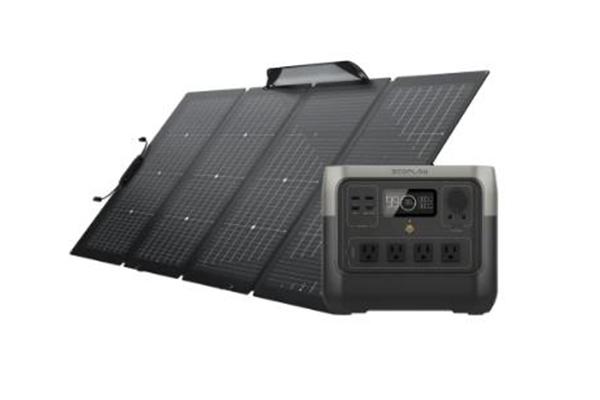Plastic connectors are an essential component in many industries, including automotive, electronics, medical, aerospace, and consumer goods. These connectors play a crucial role in ensuring the seamless functioning of machines and devices. In this blog post, we will explore the types of plastics used in plastic connectors, their properties, applications, and manufacturing processes. We will also discuss the environmental concerns associated with plastic connectors and potential alternatives.
Types of Plastics Used in Plastic Connectors
Plastic connectors are made from various types of plastics, each with its unique properties and characteristics. The two main categories of plastics used in plastic connectors are thermoplastics and thermosetting plastics.
Thermoplastics
Thermoplastics are the most commonly used plastics in plastic connectors. These plastics can be heated and molded into different shapes and sizes without undergoing any chemical changes. The most common thermoplastics used in plastic connectors are:
- Polyamide (PA): Polyamide is a strong and durable thermoplastic that is resistant to abrasion, heat, and chemicals. It is commonly used in automotive and electronic applications.
- Polycarbonate (PC): Polycarbonate is a transparent and impact-resistant thermoplastic. It is commonly used in applications that require high optical clarity, such as lenses and light guides.
- Polyethylene (PE): Polyethylene is a lightweight and flexible thermoplastic that is resistant to moisture and chemicals. It is commonly used in medical and consumer goods applications.
- Polypropylene (PP): Polypropylene is a tough and rigid thermoplastic that is resistant to fatigue and creep. It is commonly used in automotive and consumer goods applications.
- Acrylonitrile Butadiene Styrene (ABS): ABS is a strong and impact-resistant thermoplastic that is commonly used in electronic and automotive applications.
- Polyvinyl Chloride (PVC): PVC is a versatile and inexpensive thermoplastic that is resistant to weathering and chemicals. It is commonly used in consumer goods and medical applications.
- Polystyrene (PS): Polystyrene is a lightweight and rigid thermoplastic that is commonly used in packaging and consumer goods applications.
Thermosetting Plastics
Thermosetting plastics are plastics that undergo a chemical change during the molding process, resulting in a rigid and inflexible material that cannot be melted or reshaped. The most common thermosetting plastics used in plastic connectors are:
- Phenolics: Phenolics are a type of thermosetting plastic that is strong, durable, and heat-resistant. They are commonly used in electronic and automotive applications.
- Epoxies: Epoxies are a type of thermosetting plastic that is strong, durable, and resistant to heat and chemicals. They are commonly used in electronic and aerospace applications.
- Polyester (PET): PET is a thermosetting plastic that is strong, lightweight, and resistant to moisture and chemicals. It is commonly used in consumer goods and medical applications.
- Urea-formaldehyde (UF): UF is a thermosetting plastic that is strong, durable, and resistant to heat and moisture. It is commonly used in consumer goods applications.
Properties of Plastics Used in Plastic Connectors
The properties of plastics used in plastic connectors vary depending on the type of plastic. However, there are some common properties that are essential for plastic connectors, including:
Strength and Durability
Plastic connectors must be strong and durable to withstand the stresses and strains of daily use. The strength and durability of plastic connectors depend on the type of plastic used and the manufacturing process.
Temperature Resistance
Plastic connectors must be able to withstand high temperatures without deforming or melting. The temperature resistance of plastics used in plastic connectors depends on the melting point and glass transition temperature of the plastic.
Chemical Resistance
Plastic connectors must be able to resist exposure to various chemicals without degrading or corroding. The chemical resistance of plastics used in plastic connectors depends on the chemical composition of the plastic.
Electrical Insulation Properties
Plastic connectors must be able to provide effective electrical insulation to prevent short circuits or electrical interference. The electrical insulation properties of plastics used in plastic connectors depend on the dielectric strength and resistivity of the plastic.
Flame Retardancy
Plastic connectors must be able to resist flames and prevent the spread of fire in case of an accident. The flame retardancy of plastics used in plastic connectors depends on the chemical composition and additives used in the plastic.
Applications of Plastic Connectors
Plastic connectors are used in a wide range of industries and applications, including:
Automotive Industry
Plastic connectors are widely used in the automotive industry for various applications, including electrical systems, fuel systems, and cooling systems. Plastic connectors offer several advantages over metal connectors, including weight reduction, cost-effectiveness, and corrosion resistance.
Electronics Industry
Plastic connectors are widely used in the electronics industry for various applications, including printed circuit boards, sensors, and power supplies. Plastic connectors offer several advantages over metal connectors, including ease of manufacturing, cost-effectiveness, and resistance to electrical interference.
Medical Industry
Plastic connectors are widely used in the medical industry for various applications, including surgical instruments, medical devices, and drug delivery systems. Plastic connectors offer several advantages over metal connectors, including biocompatibility, sterilization compatibility, and chemical resistance.
Aerospace Industry
Plastic connectors are widely used in the aerospace industry for various applications, including communication systems, navigation systems, and fuel systems. Plastic connectors offer several advantages over metal connectors, including weight reduction, cost-effectiveness, and resistance to extreme temperatures.
Consumer Goods Industry
Plastic connectors are widely used in the consumer goods industry for various applications, including appliances, toys, and packaging. Plastic connectors offer several advantages over metal connectors, including ease of manufacturing, cost-effectiveness, and design flexibility.
Manufacturing Process of Plastic Connectors
The manufacturing process of plastic connectors depends on the type of plastic and the complexity of the connector. The three most common manufacturing processes for plastic connectors are:
Injection Molding
Injection molding is the most common manufacturing process for plastic connectors. In this process, the plastic is melted and injected into a mold, where it solidifies and takes the shape of the mold.
Compression Molding
Compression molding is a manufacturing process used for thermosetting plastics. In this process, the plastic is preheated and placed in a mold, where it is compressed and heated to cure the plastic.
Blow Molding
Blow molding is a manufacturing process used for hollow plastic connectors. In this process, the plastic is melted and extruded into a parison, which is then inflated and cooled to form the final shape of the connector.
Environmental Concerns and Sustainability
Plastic connectors contribute to the global plastic waste problem and pose a significant threat to the environment. To address these concerns, several initiatives have been taken to promote the recycling and sustainable use of plastic connectors.
Recycling of Plastic Connectors
Plastic connectors can be recycled and reused to reduce the amount of plastic waste generated. Several recycling programs have been launched to collect and recycle plastic connectors.
Alternatives to Plastic Connectors
Several alternatives to plastic connectors, including metal connectors, ceramic connectors, and biodegradable connectors, are being developed to reduce the environmental impact of plastic connectors.
Conclusion
Plastic connectors are an essential component in many industries, and the types of plastics used in plastic connectors play a significant role in determining their properties and applications. Chemical resistance, electrical insulation properties, and flame retardancy are crucial properties that plastics used in plastic connectors must possess. Plastic connectors are used in various industries, including the automotive, electronics, medical, aerospace, and consumer goods industries.
The manufacturing process of plastic connectors depends on the type of plastic and the complexity of the connector, with injection molding being the most common manufacturing process. The environmental concerns and sustainability of plastic connectors are also being addressed through recycling programs and the development of alternative materials.
Overall, plastic connectors have many advantages over metal connectors, including weight reduction, cost-effectiveness, and design flexibility. However, the environmental impact of plastic connectors cannot be ignored, and efforts must be made to reduce plastic waste and promote sustainability in their production and use.




